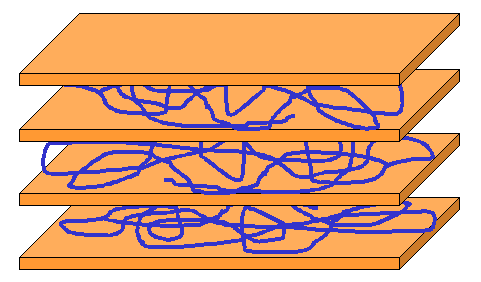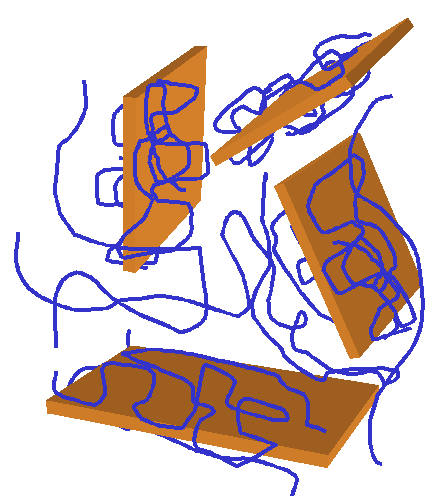

Montmorillonite clay naturally forms stacks of plate-like
structures, or platelets.
Each platelet is less than 10 Angstroms thick, but over
200 times that in width.
The spaces between these platelets are called gallery
spaces.
For a description of the molecular structure of the clay
plates, click here. It is difficult
to describe just
how much surface area the clay platelets have.
They are so incredibly thin, though, that a small mass of
clay has a disproportionately large surface area.
Think of it this way. A dumptruck full of sheets of paper would be
carrying way more surface area than a dumptruck full of beachballs, or
even baseballs.
If the clay swells so much that it is no longer organized into stacks, it is said to be exfoliated.
 |
 |
|
|
|